“We have loved long enough and want to hate at last!” wrote the 24-year-old German poet Georg Herwegh in 1841. He called for love to be replaced by hate, for “tyranny on Earth” to be fought for, and for “the chains of oppression to be broken.”
Herwegh was one of the most important political poets of the Young Germany movement, who were active during the period before the revolution that began in March 1848.
He and his like-minded contemporaries wanted to overthrow the rule of the princes in the German Confederation by force. At the time, there was not yet a united German Empire, but instead, a loose confederation of states and four “free cities,” most of which were ruled by princes.
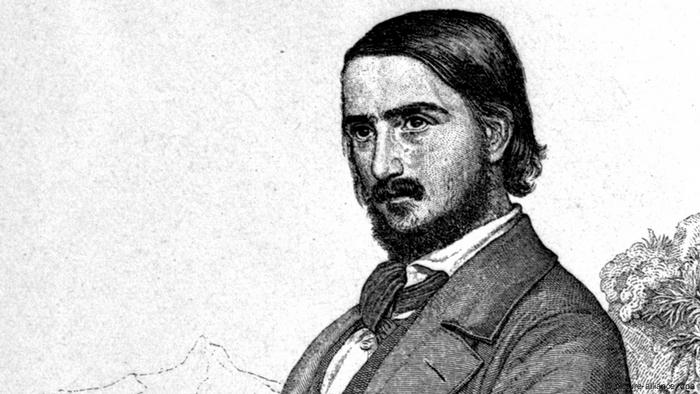
‘We have loved long enough’: Georg Herwegh was at the forefront of the Vormärz revolutionary movement
The hatred felt by Herwegh and his comrades-in-arms was directed against the aristocratic rulers and the existing order. All means were acceptable to the radical democratic insurgents. But the revolution failed, and the democratic forces were permanently weakened.
The lyrics of Herwegh’s “Song of Hate” and the German revolutions of 1848/49 are just a few of the themes in the exhibition “Hatred. What Moves Us” at the Haus der Geschichte Baden-Württemberg (House of History in the southwestern German state of Baden-Württemberg).
The exhibit encompasses 200 objects from 200 years that portray hatred in all its forms and manifestations. From hatred of women to hatred of Jews, to hatred of “infidels” or “foreigners,” the shows reflects our society up to the present day.
Hatred is not a new phenomenon
“I have seen too much hate to want to hate, myself,” civil rights leader Martin Luther King is quoted as saying. And yet, over 50 years after his assassination, hatred remains one of the most central phenomena of our society.
A symbol of that hatred that runs through society are the green-blue ropes that are strung through the museum’s exhibition spaces and which characterize “society’s entanglement in hate,” says Sebastian Dörfler, who is part of the curatorial team.
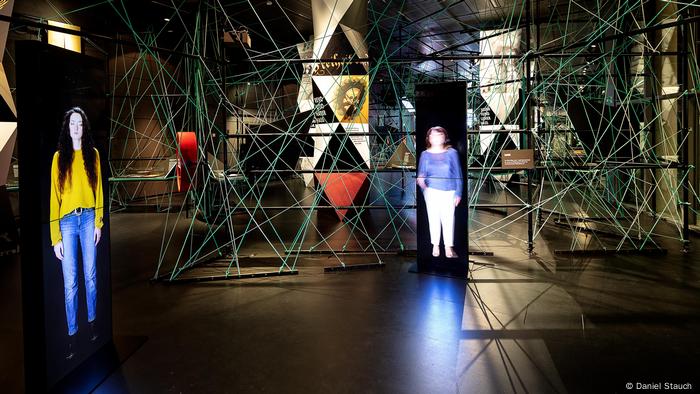
Green and blues ropes symbolize society’s ‘entanglement in hate,’ says one of the curators
The deadly attack in Hanau, Germany in 2020, motivated by racism and antisemitism; the murder of the Kassel district president Walter Lübcke in 2019; the NSU attacks on Turkish-Germans in the early 2000s are just few examples giving the impression that the number of hate-motivated violence is increasing. “As a historian, I would question that notion. Yes, the internet has dramatically facilitated the spread of hate-filled messages, but of course, they existed much earlier. The phenomenon is certainly not new, but it is more noticeable,” says Dörfler.
-
Chronicle of the NSU murders
A mysterious string of murders
For years, neo-Nazis of the right-wing organization National Socialist Underground (NSU) killed people across Germany. The suspects: Uwe Mundlos, Uwe Böhnhardt (center) and Beate Zschäpe. Their victims: eight people of Turkish origin, one Greek man and a German policewoman. Their motive: xenophobia. Until 2011, the German public was not aware of the scope of their crimes.
-
Chronicle of the NSU murders
Unsuccessful bank robbery
The murder spree was uncovered on November 4, 2011, when Mundlos and Böhnhardt robbed a bank in the east German town of Eisenach. For the first time, they failed. Police officers surrounded the caravan in which the two men were holed up. A later investigation concluded that Mundlos first shot and killed Böhnhardt, then set the caravan on fire and killed himself.
-
Chronicle of the NSU murders
Zschäpe turns herself in
Shortly after the death of Böhnhardt and Mundlos there was an explosion at Frühlingsstraße 26 in Zwickau, in the state of Saxony. Beate Zschäpe lived at that address together with the two bank robbers. Zschäpe allegedly set the house on fire to destroy evidence. Four days later, she turned herself in to the police. The terror suspect has been custody since that day.
-
Chronicle of the NSU murders
The truth comes out
In the ruins of the Zwickau flat, police officers found a self-made video in which the terror cell claimed responsibility under the name of the NSU, the National-Socialist Underground. The 15-minute video shows crime scenes and pictures of the victims killed by the right-wing terrorist group between 2000 and 2007.
-
Chronicle of the NSU murders
NSU claim responsibility
Famous cartoon character The Pink Panther hosts the amateur video, which is full of slogans of hatred against people with an immigrant background and which mocks the murder victims. Before her arrest, Zschäpe allegedly sent out copies of the video in which the NSU claimed responsibility for the crimes.
-
Chronicle of the NSU murders
Verbal slip-ups
Until 2011, the term “döner murders” was frequently used when reporting about the killings. Nothing was known about the connection between the individual cases, nor about the motive. There were rumors the victims were linked to the drug scene. But the NSU’s video left no doubt. The term “döner murders” was chosen as Germany’s “Unwort des Jahres” (doublespeak of the year) in 2011.
-
Chronicle of the NSU murders
NSU also behind Cologne pipe bomb
“The findings made by our security authorities so far show no indication of a terrorist background, but of a criminal milieu,” said German Interior Minister Otto Schily on June 10, 2004. A day earlier, a pipe bomb explosion in Cologne left 22 people injured and many shops damaged. In 2011, it became clear: the NSU’s right-wing terrorists were also behind the Cologne bombing.
-
Chronicle of the NSU murders
Memorial service in Berlin
On February 23, 2012, Germany commemorated the victims. At the ceremony at a Berlin concert hall, the focus was on the relatives of the victims. Semiya Simsek (right), the daughter of the murdered flower stand owner Enver Simsek, gave an emotional speech. German Chancellor Angela Merkel made an official apology to the victims and promised them that all questions would be answered.
-
Chronicle of the NSU murders
Memorial for Mehmet Kubasik
“Dortmund is a colorful, tolerant and welcoming town – and opposes right-wing extremism!” This statement was made by mayor Ullrich Sierau at the unveiling of the memorial stone for NSU victim Mehmet Kubasik in September 2012. The memorial was set up just meters away from the kiosk in which Kubasik was killed on April 4, 2006.
-
Chronicle of the NSU murders
Solidarity with the victims
On November 4, 2012, exactly a year after the terror cell was uncovered, people in many German cities staged solidarity demonstrations against right-wing extremism. The protesters called for thorough investigations into the racially motivated murders – which in their view was not happening fast enough.
-
Chronicle of the NSU murders
Beate Zschäpe lone survivor
Believed to be the last survivor of the NSU trio, Beate Zschäpe went on trial in May 2013.Over 800 witnesses were heard. Zschäpe did not speak for the first two and a half years of the trial.
-
Chronicle of the NSU murders
Life sentence
Beate Zschäpe was given a life sentence. She was found guilty of joint complicity in 10 counts of murder, arson, robbery, extortion, the formation of a terrorist organization and membership in a terrorist organization. Though there was no evidence that she herself was present at the scene of the crimes, the judges felt that the “particular severity of guilt” required for a life sentence applied.
-
Chronicle of the NSU murders
The co-accused
Ralf Wohlleben received 10 years for procuring weapons for the NSU, co-accused Holger G. got three years for providing false identity papers. Another co-accused, Andre E, received two and a half years for providing the NSU with rail passes in his and his wife’s name. He also allegedly rented a mobile home which the cell drove to Cologne to carry out a bombing.
-
Chronicle of the NSU murders
Long lasting impact
When conservative politician Walter Lübcke was murdered by a neo-Nazi activist in 2019, his name was also found on the ‘list of enemies’ for targetted killings. Lübcke had come under attack from the far-right following a speech he made in 2015 defending the decision to take in refugees from the Syrian war.
-
Chronicle of the NSU murders
Securty agency failings
The federal and the state parliaments launched investigations to shed light on the security authorities’ failures in the NSU case: The role of paid informants, the lack of cooperation between the various intelligence agencies and state interior ministries, which are responsible for police in the respective states, and allegations of systemic racism on the part of German authorities.
Author: Anna Peters / nh
The exhibition in the House of History therefore not only looks at the present, but sheds light on 200 years of aversion and hostility, fear, envy and contempt.
The show begins with the 19th-century German Empire and a look at the assassination attempt on chancellor and prime minister Otto von Bismarck.
On May 7, 1866, Ferdinand Cohen-Blind attempted to shoot the Prussian prime minister on an open street, because for the man from Mannheim, the politician was considered an enemy and a traitor to Germany. Cohen-Blind fired five shots, two of which hit Bismarck, but the small bullets were slowed down by thick clothing. The assassin committed suicide the following day.
Hatred from the far right
One focus of the exhibition is a section dealing with hatred stemming from the far right. “Right-wing extremism is a fundamental evil of our society that goes hand-in-hand with democracy,” says Dörfler, who is also a historian who studies the phenomenon.
Several contemporary examples are shown in the exhibition, but past far-right attacks are also recalled, such as attacks carried out by the neo-Nazi organization Deutsche Aktionsgruppen (“German Action Groups”) in 1980.

On June 2, 2019, politician Walter Lübcke was shot dead by a right-wing extremist
“This group was not isolated; they actually did all the things that we also see today,” said Dörfler. “They attacked a local politician; they targeted the culture of remembrance and, of course, ‘foreigners.'”
“In the process, they murdered two Vietnamese. This shows that there are long strands that exist everywhere,” said Dörfler.
“We must not make the mistake of believing that everything we are experiencing now has come out of nowhere,” Dörfler added.
Hatred of women
A showcase in the exhibit with red women’s shoes is intended to commemorate murdered women who are victims of femicide. Every third day in Germany, a woman is murdered by her (ex-)partner.
Cases of femicide are often referred to as “jealousy dramas” or “family tragedies,” which often only serves to minimize their impact.
On the contrary, they are societal problems. According to statistics from the German state of Baden-Württemberg alone, kits for medical examination and evidence recovery after a sexual offense were recorded for 13,066 cases in 2019. More than 80% of those affected were women. Perpetrators and victims come from all social classes.
Hope on the horizon?
The exhibition also counters all this hatred with a section that offers hope: People who have fought against hate and advocate an open, tolerant and democratic order.
One such person is Irmela Mensah-Schramm, who has been removing stickers with racist messages from building walls, lampposts and other urban spots since 1986.
The first sticker she removed demanded freedom for Hitler’s “deputy” Rudolf Hess, who was sentenced to life imprisonment in the course of the Nuremberg trial.
The 76-year-old has meanwhile removed more than 90,000 stickers and over 10,000 bits of graffiti. “We want to show that you can take action. Irmela Mensah-Schramm shows that very impressively. Often you pass by some messages, mostly you ignore them or you shake your head and you move on. But she has taken action,” says Dörfler.
The exhibition looks at the abysses of the human soul, with a view to society and history. Hate is part of the substance of a democratic society. It flares up when people stand up for rights, when they speak out for democracy. Only if people are determined and loud in confronting hatred can this anomaly be stopped.
The exhibition runs through July 27, 2022. It is part two of a trilogy exhibition at the House of History, that looks at greed, hatred and love.
-
Attacks on synagogues in Germany
Cologne, 1959: Swastikas and hate speech
In December 1959, two members of the Deutsche Reichspartei (DRP) right-wing extremist party painted swastikas and the words “Germans demand: Jews out” on the synagogue in Cologne. Anti-Semitic graffiti emerged across the country. The perpetrators were convicted, and the Bundestag passed a law against “incitement of the people,” which remains on the books to this day.
-
Attacks on synagogues in Germany
Lübeck, 1994: First arson attack on a temple in decades
People across the world were horrified at the March 1994 attack on the synagogue in the northern city of Lübeck. For the first time in decades, a synagogue in Germany burned. Four right-wing extremists were eventually convicted of arson. The day after the fire, 4,000 locals took to the streets under the slogan “Lübeck holds its breath.” In 1995, the same synagogue was hit by another arson attack.
-
Attacks on synagogues in Germany
Essen, 2000: Stones hurled into Old Synagogue
Armed with paving stones, more than 100 Palestinians from Lebanon attacked the Old Synagogue in Essen in October 2000. The incident occurred after a demonstration against “violence in the Middle East.” A police officer was injured. Mahmud Alaeddin, deputy head of the general delegation of Palestine in Germany, distanced himself from the attack.
-
Attacks on synagogues in Germany
Düsseldorf, 2000: Arson and stones
A 19-year-old Palestinian and a 20-year-old Moroccan damaged Düsseldorf’s New Synagogue with incendiary devices and rocks in October 2000 as “revenge” against Jews and the state of Israel. “We need the respectable people to rebel” against anti-Semitism, then-German Chancellor Gerhard Schröder demanded. The federal and state governments and various NGOs launched campaigns to counter extremism.
-
Attacks on synagogues in Germany
Mainz, 2010: Molotov cocktail attack shortly after inauguration
Shortly after being inaugurated in September 2010, an arson attack hit the New Synagogue in Mainz during the night of October 30. The spectacular Deconstructivist building by architect Manuel Herz was erected on the site of the former main synagogue that was set on fire during the Kristallnacht, the Nazis’ national night of pogroms, in 1938.
-
Attacks on synagogues in Germany
Wuppertal, 2014: Incendiary devices
In July 2014, three young Palestinians hurled incendiary devices at the front door of the synagogue in Wuppertal. In a highly controversial decision, the court ruled there was “no evidence whatsoever” of anti-Semitic motives. Jews in Germany and the foreign media were outraged. The chairman of the Jewish Community Wuppertal declared the ruling as “an invitation to further crimes.”
-
Attacks on synagogues in Germany
Berlin, 2019: Knife-wielding attacker
A man wielding a knife climbed over a barrier at Berlin’s New Synagogue on the eve of Shabbat on October 4, 2019, during the holy period between the holidays of Rosh Hashanah and Yom Kippur. Security personnel overwhelmed the attacker, whose motive remained unclear. Police released him afterwards, a decision Jewish leaders called “a failure” of justice.
-
Attacks on synagogues in Germany
Halle, 2019: Shooter attempts mass murder on Yom Kippur
About 80 people were in the synagogue on Wednesday afternoon to observe Yom Kippur, the Jewish calendar’s holiest day. The alleged attacker reportedly attempted to shoot his way into the synagogue but was prevented by a safety door. Two passersby were shot to death and two were injured. The suspect, who has a history of right-wing extremist, anti-Semitic, and misogynist rhetoric, was detained.
Author: Bettina Baumann
This article was originally written in German.
Exploring 200 years of hatred in German history
Source:
Pinoy Pop News



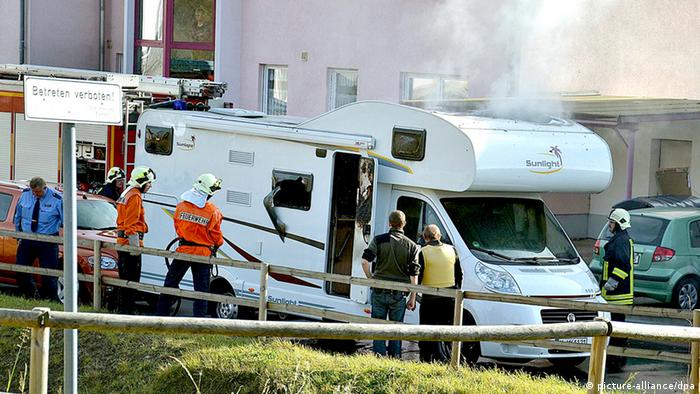

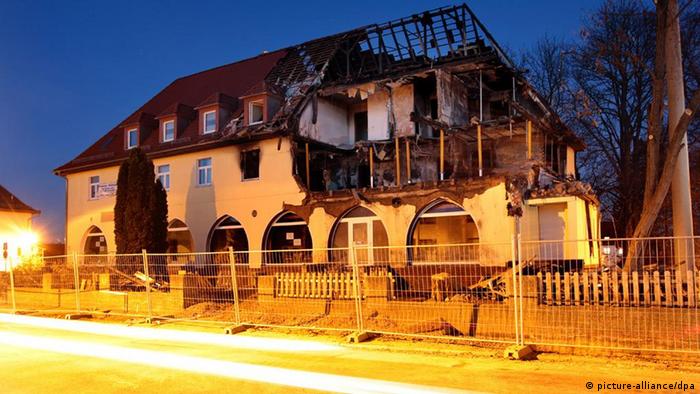





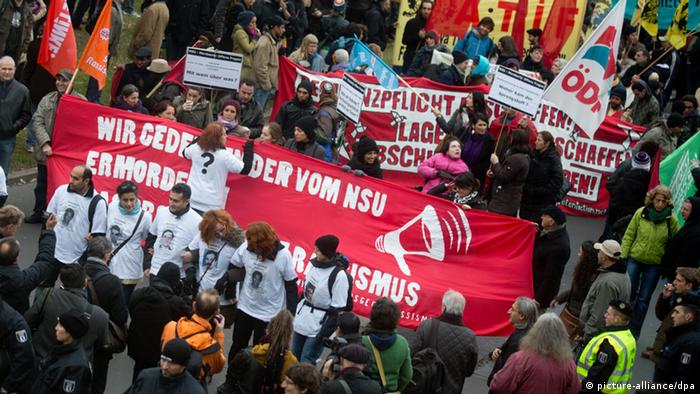








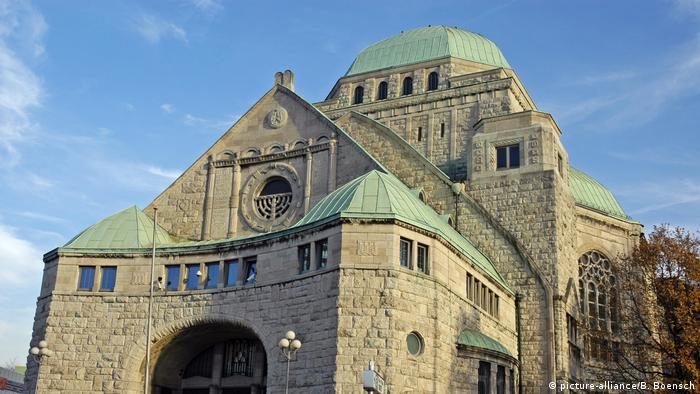

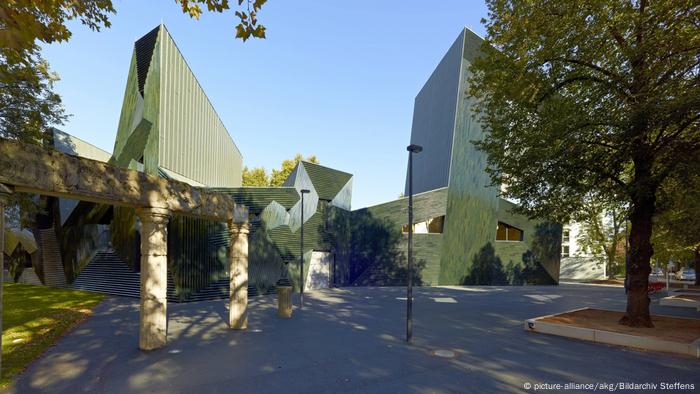
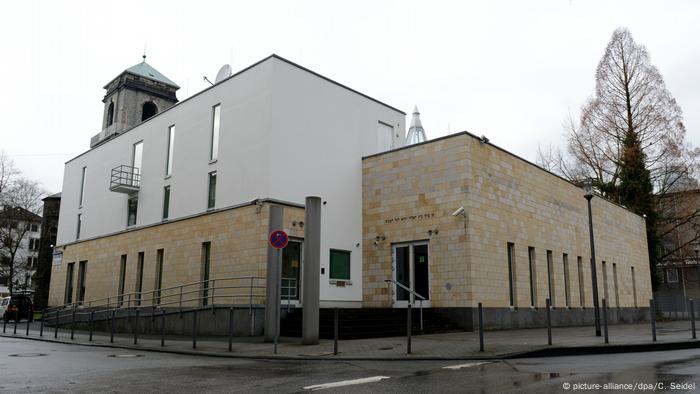


0 Comments